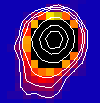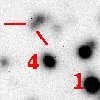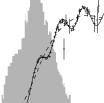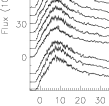Some notes relevant to astro-types thinking about migrating from other *nix platforms to OS X. People keep asking me about it.
The biggest advantage is avoiding dual-boot arrangements and and messing around with
partitions etc., but still having access to commercial packages such as
Microsoft Office (as well as iTunes of course!)
Astronomical data analysis packages that have been ported to OS X (not by any means complete):
- HEAsoft comprising the FTools and XANADU packages for X-ray data analysis (RXTE, ASCA etc.)
- CIAO for Chandra data analysis
- SAS v6.1.0 for XMM-Newton data analysis
- IRAF, a general purpose system for the reduction and analysis of astronomical data (see the dedicated maciraf page)
- Karma, a "toolkit for interprocess communications, authentication, encryption, graphics display, user interface and manipulating the Karma network data structure".
Packages that have NOT as yet been ported (completely)
Other essential packages:
As for security, by default, OS X won't allow any
connections from outside, unless you explicitly allow them. There is
built-in firewall, and encryption of folder
contents (
FileVault) if you want either of those. As well there aren't all the nasty
viruses and crap for Mac at the moment that there are for Windows
(although that may change in the future if Apple significantly increases
market share!)
Labels: 2004, /reference
 Initially identified as a new X-ray transient by ESA's INTEGRAL satellite, IGR J00291+5934 was found in RXTE observations to be a 599 Hz millisecond pulsar. Subsequent observations revealed a 2.46 hr orbit, making the source very similar to the original millisecond X-ray pulsar, SAX J1808.4-3658.
Initially identified as a new X-ray transient by ESA's INTEGRAL satellite, IGR J00291+5934 was found in RXTE observations to be a 599 Hz millisecond pulsar. Subsequent observations revealed a 2.46 hr orbit, making the source very similar to the original millisecond X-ray pulsar, SAX J1808.4-3658.


 Analysis of archival Chandra data
of the symbiotic system CH Cygni reveals faint extended
emission to the south, aligned with the optical and radio jets seen in
earlier HST and VLA observations.
CH Cygni is only the
second known
Analysis of archival Chandra data
of the symbiotic system CH Cygni reveals faint extended
emission to the south, aligned with the optical and radio jets seen in
earlier HST and VLA observations.
CH Cygni is only the
second known 
 RXTE observations reveal the 18.7 s
pulsar KS 1947+30 to be in an almost circular 40.415 d orbit. We found evidence for a
"glitch" - an abrupt increase in the neutron star spin frequency - previously observed
only in radio pulsars and AXPs.
RXTE observations reveal the 18.7 s
pulsar KS 1947+30 to be in an almost circular 40.415 d orbit. We found evidence for a
"glitch" - an abrupt increase in the neutron star spin frequency - previously observed
only in radio pulsars and AXPs.
 Analysis of the regular thermonuclear bursts from GS 1826-24 provide the best verification yet of theoretical ignition models. Solar metallicity models naturally reproduce the observed burst energies, but not the recurrence time variation.
Analysis of the regular thermonuclear bursts from GS 1826-24 provide the best verification yet of theoretical ignition models. Solar metallicity models naturally reproduce the observed burst energies, but not the recurrence time variation.


